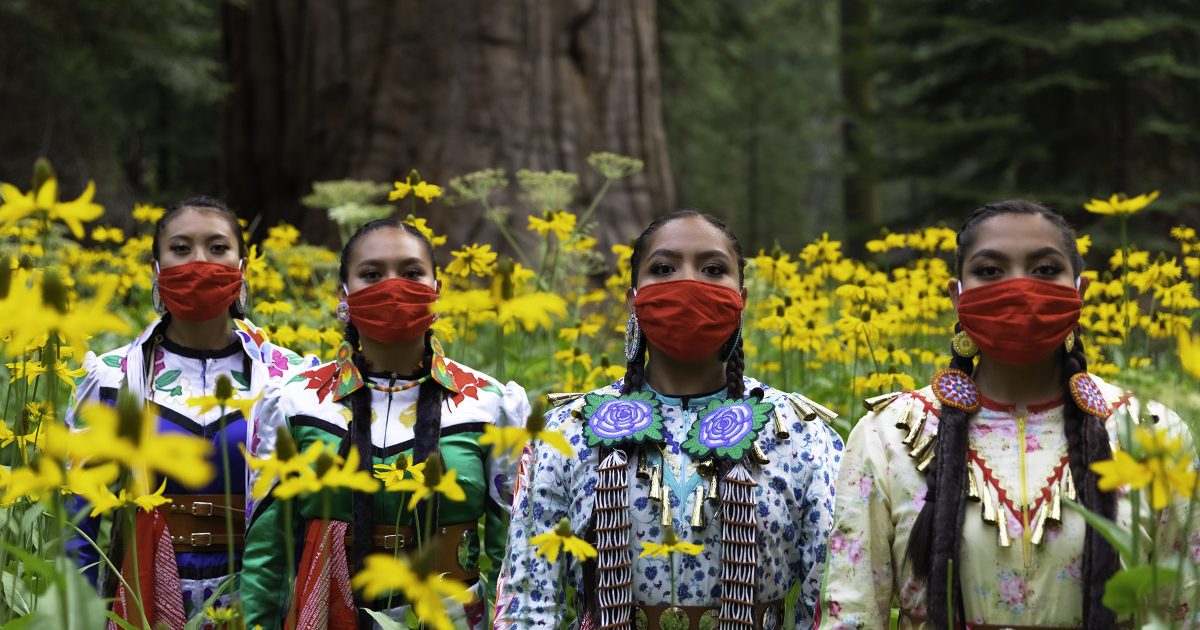Art Heals: The Jingle Dress Project
I recently attended a Jingle Dress Performance. The sounds of the bells on the dresses during the dance was so moving and so visceral. I could hear it with my heart.
The Jingle Dress Project was born from a dream. In his dream, Eugene Tapahe suddenly saw Jingle Dress Dancers. They appeared and started performing the traditional Ojibwe healing dance, with bison slowly joining in.
“All of a sudden, I felt like I was at peace,” Tapahe says in an interview with Christian Allaire of Vogue Magazine. “At the time, everything felt hopeless and dismal, and we didn’t really know what was going to happen. But in the dream, I felt a sense of hope and healing.” When he awoke, he wanted to bring that feeling to reality—and to share that feeling of peace with other Indigenous communities that were also suffering.
To unite the beauty of the land and healing power of the jingle dance
The Jingle Dance to the Ojibwe people happened during the influenza pandemic in 1918-19, through a father’s dream to heal his daughter. His dream revealed the new dress and dance with the power to heal. The jingle dresses were given to four women who performed the dance. When the young girl heard the sound of the bells on the dresses, she became stronger. By the end of the night, she was dancing too.
From an excerpt of the project description as per Tapahe Photography website:
“Traditionally, jingle dress dancers wear regalia adorned with beadwork and ribbon, as well as triangular metal cones around the skirt, which shake and create a distinctive sound with each step. The accessories the four jingle dress dancers wear are also embedded with special meaning. The jingle dress dancer wears a red scarf adorned with a jingle dress dancer on it to symbolize missing and murdered Indigenous women. The dance is a prayer for those who have gone missing and for those who have been harmed.”
We Need To Do Better
There is a nationwide crisis of missing and murdered Indigenous women and girls. Indigenous women are more likely to go missing or be murdered than any other ethnicity. Because the population of Indigenous people is small (making up 2% of the population), it is not reported on a lot. However, more than four in five American Indian and Alaska Native women and men have experienced violence in their lifetime, and more than one in three experienced violence in the past year, according to a new report from an NIJ-funded study.
Though available data is limited, the number of missing and murdered American Indian and Alaska Native women and the lack of a coordinated, effective response is extremely alarming to indigenous women, tribal governments, and communities. On some reservations, indigenous women are murdered at more than ten times the national average.
Sadly, most victims never see their abusers brought to justice.

What is Being Done?
The Indian Law Resource Center’s Safe Women, Strong Nations project partners with Native women’s organizations and Indian and Alaska Native nations to end violence against Native women and children. The purpose of the project is to:
- To raise awareness about the dangers faced by Native women and children.
- Gain federal attention to address or even end the violence.
- Provide legal advice
- To empower Native women’s organization to prevent violence and to hold perpetrators accountable.
“We must act together to restore safety to Native women and children and to help Indian nations address the appalling cycle of violence in Native communities. The time is now.”
What You Can Do
Indigenous women are frequently nameless and forgotten. This Thanksgiving, as you are celebrating with your family and friends, take time to do a little something to help these women who will not celebrate with their families any longer.
- Please consider a donation to Eugene Tapahe or purchase his prints.
- Donate to the Indian Law Resource Center
- Learn more about violence against Indigenous women.
